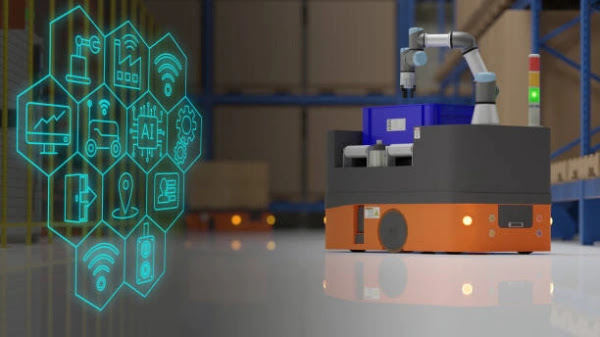Featured
- Get link
- X
- Other Apps
Smart Transportation Systems
Future Mobility
Introduction
Smart transportation systems are revolutionizing the way
people and goods move within cities and across regions. These systems integrate
advanced technologies, data analytics, and connectivity to enhance efficiency,
safety, and sustainability in transportation networks. As cities grapple with
increasing urbanization, congestion, and environmental challenges, smart
transportation solutions offer innovative approaches to address these issues
and shape the future of mobility. This essay explores the principles of smart
transportation systems, their key components, and the transformative impact
they have on future mobility.
- Principles of Smart Transportation
Systems: Smart transportation systems are built on several key
principles aimed at improving the efficiency, safety, and sustainability
of transportation networks. Some of these principles include:
- Connectivity: Smart transportation
systems leverage connectivity technologies, such as Internet of Things
(IoT), wireless communication, and vehicle-to-infrastructure (V2I)
communication, to enable real-time data exchange between vehicles,
infrastructure, and control centers. This connectivity facilitates
information sharing, traffic management, and coordination of
transportation services.
- Data Analytics: Advanced data
analytics techniques, including machine learning, artificial intelligence,
and predictive modeling, are used to analyze vast amounts of
transportation data collected from various sources, such as sensors, GPS
devices, and traffic cameras. These analytics enable insights into traffic
patterns, demand forecasting, route optimization, and predictive
maintenance, allowing transportation agencies to make data-driven
decisions and improve system performance.
- Automation: Automation
technologies, such as autonomous vehicles, traffic signal control systems,
and intelligent transportation systems (ITS), automate various aspects of
transportation operations, including vehicle control, traffic management,
and logistics. Automation enhances safety, efficiency, and reliability by
reducing human error and optimizing resource allocation.
- Integration: Smart transportation
systems integrate multiple modes of transportation, including public transit,
shared mobility services, cycling, walking, and micro-mobility options,
into a seamless, interconnected network. Integrated mobility platforms
enable travelers to plan, book, and pay for multimodal trips using a
single interface, promoting sustainable and efficient transportation
choices.
- Sustainability: Smart
transportation systems prioritize environmental sustainability by
promoting the use of clean energy sources, reducing greenhouse gas
emissions, and minimizing the environmental impact of transportation
activities. Sustainable mobility solutions, such as electric vehicles
(EVs), bike-sharing programs, and pedestrian-friendly infrastructure,
support climate goals and improve air quality in urban areas.
- Key Components of Smart Transportation
Systems: Smart transportation systems comprise various components that
work together to optimize mobility and improve transportation outcomes.
Some of the key components include:
- Intelligent Transportation Systems
(ITS): ITS encompass a wide range of technologies and applications
designed to improve traffic flow, enhance safety, and reduce congestion on
roadways. These include traffic signal control systems, electronic toll
collection systems, dynamic message signs, and traffic monitoring and
management tools.
- Connected Vehicles: Connected
vehicle technologies enable vehicles to communicate with each other and
with roadside infrastructure in real-time, sharing information about
traffic conditions, road hazards, and weather conditions.
Vehicle-to-Vehicle (V2V) and Vehicle-to-Infrastructure (V2I) communication
enable cooperative driving and collision avoidance, enhancing safety and
efficiency on roadways.
- Public Transit Systems: Smart
public transit systems leverage technology to improve service reliability,
accessibility, and rider experience. This includes real-time passenger
information systems, fare payment technologies, smart ticketing solutions,
and demand-responsive transit services. Integrated fare payment systems
and multimodal trip planning tools enable seamless connectivity between
different modes of public transportation.
- Shared Mobility Services: Shared
mobility services, such as ride-sharing, bike-sharing, and
scooter-sharing, provide flexible and affordable transportation options
for urban dwellers. Smart mobility platforms enable users to locate,
reserve, and unlock shared vehicles using mobile apps, promoting efficient
use of transportation resources and reducing reliance on private car
ownership.
- Infrastructure Modernization:
Smart transportation systems require modernization of infrastructure to
support advanced technologies and accommodate changing mobility needs.
This includes investments in smart traffic signals, connected
intersections, dedicated lanes for public transit and cycling, electric
vehicle charging infrastructure, and pedestrian-friendly streetscapes.
- Transformative Impact on Future
Mobility: Smart transportation systems have a transformative impact on
future mobility, shaping the way people and goods move within cities and
regions. Some of the key transformative impacts include:
- Improved Efficiency: Smart
transportation systems optimize transportation networks, reduce
congestion, and improve travel times through real-time traffic management,
dynamic routing, and demand-responsive services. By leveraging data
analytics and automation, these systems enhance operational efficiency and
minimize delays, improving overall mobility outcomes.
- Enhanced Safety: Smart
transportation systems prioritize safety by leveraging connected vehicle
technologies, collision avoidance systems, and intelligent traffic
management strategies. Real-time monitoring of traffic conditions,
automated incident detection, and emergency response capabilities reduce
the risk of accidents and mitigate the severity of crashes, saving lives
and reducing injuries on roadways.
- Sustainable Mobility: Smart
transportation systems promote sustainable mobility solutions, such as
public transit, cycling, walking, and shared mobility services, to reduce
greenhouse gas emissions, improve air quality, and address environmental
concerns. By incentivizing the use of clean energy sources and promoting
modal shifts towards more sustainable transportation options, these
systems support climate goals and enhance the livability of urban
environments.
- Enhanced Accessibility: Smart transportation systems improve accessibility for all users, including
seniors, people with disabilities, and underserved communities. Accessible
transit options, integrated mobility platforms, and on-demand services
provide equitable access to transportation services and support social
inclusion and economic opportunity for all members of society.
Conclusion:
In conclusion, smart transportation systems represent a
transformative approach to mobility, leveraging advanced technologies,
connectivity, and data analytics to optimize transportation networks and
improve mobility outcomes. By prioritizing efficiency, safety, sustainability,
and accessibility, these systems address the complex challenges facing urban
transportation and shape the future of mobility in cities and regions around
the world. As technology continues to evolve and urbanization accelerates,
smart transportation systems will play an increasingly critical role in
creating more connected, livable, and sustainable communities.
- Get link
- X
- Other Apps


